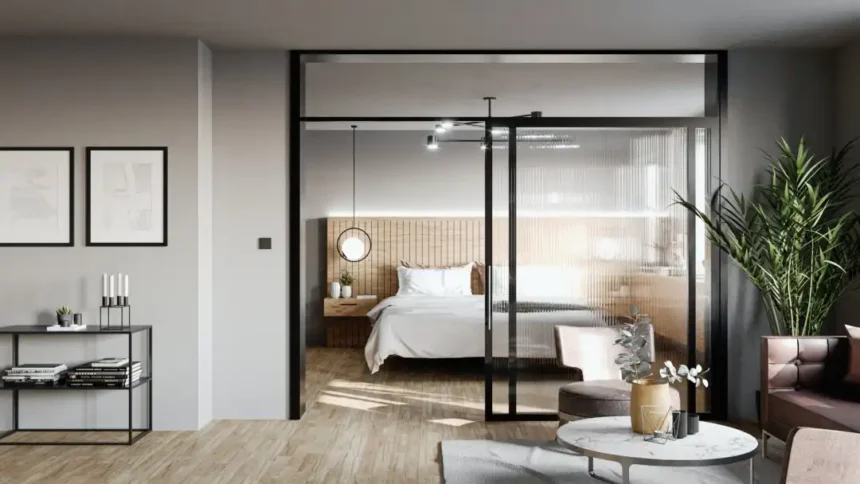The Transformative Power of 3D Furniture Visualization in Interior Design
Technology has emerged as an indispensable partner in the realm of interior design, revolutionizing traditional practices and opening new possibilities. Among the most significant advancements is the advent of 3D furniture visualization. This powerful tool is reshaping the way designers and homeowners envision and execute their projects, allowing them to preview furniture in a space virtually before making any physical changes. This article delves into the intricacies of 3D furniture visualization, its myriad benefits, leading tools, and strategies to harness its full potential.
Understanding 3D Furniture Visualization
3D furniture visualization is a cutting-edge technology that enables users to craft and explore three-dimensional models of furniture in a virtual environment. Unlike conventional 2D floor plans or static images, 3D visualization offers a more immersive and interactive experience. Users can rotate and manipulate models to observe how various pieces of furniture will appear from different angles and under varying lighting conditions.
The Evolution of Interior Design
Historically, interior design depended largely on sketches, mood boards, and physical models. While these methods were effective, they had limitations in showcasing the complete potential of a space. The advent of computer-aided design (CAD) and the subsequent rise of 3D visualization have dramatically transformed the industry, enabling precise, detailed, and highly realistic portrayals of design concepts.
The Advantages of 3D Furniture Visualization
Enhanced Accuracy and Detail
A primary advantage of 3D furniture visualization is its ability to offer detailed and accurate depictions of how furniture will look and fit within a space. This precision helps in avoiding costly errors and ensures the final design aligns closely with the client’s vision.
Improved Client Communication
Communicating design ideas to clients can often be challenging for interior designers. 3D visualization bridges this gap, providing clients with a clear and accurate view of the designer’s vision. This clarity can expedite client approvals and reduce the need for revisions.
Time and Cost Efficiency
3D visualization allows designers and homeowners to experiment with various layouts and styles without the need to physically move items or make purchases. This capability reduces the time spent on trial and error and minimizes the risk of investing in unsuitable furniture.
Greater Creative Freedom
3D furniture visualization tools empower designers to explore creative possibilities without limitations. They can experiment with unconventional designs and layouts, make quick adjustments, and see the impact of changes in real-time.
Leading 3D Furniture Visualization Tools
SketchUp
Overview: SketchUp is a user-friendly 3D modeling tool extensively used in interior design. It offers both free and professional versions, catering to both beginners and seasoned professionals.
Features:
- Intuitive interface
- Extensive library of pre-made models
- Integration with VR for immersive experiences
Best For: Designers seeking a balance between ease of use and advanced capabilities.
Autodesk 3ds Max
Overview: 3ds Max is a robust tool known for creating detailed 3D models and animations, popular among professional designers and architects.
Features:
- Advanced rendering capabilities
- Comprehensive modeling tools
- Realistic texture and material application
Best For: Professional designers needing high-quality renderings and detailed models.
Blender
Overview: Blender is an open-source 3D modeling tool with a vast range of features for creating intricate 3D models and visualizations.
Features:
- Free to use
- Extensive set of modeling and animation tools
- Active community and numerous tutorials
Best For: Designers looking for a versatile and cost-effective tool.
Maximizing the Potential of 3D Furniture Visualization
Start with Accurate Measurements
Accurate measurements are crucial for effective 3D visualization. Ensure precise dimensions of the space and furniture pieces to create a realistic and functional model.
Use High-Quality Textures and Materials
The quality of textures and materials greatly affects the realism of your 3D visualizations. Use high-resolution images and pay attention to details like lighting and shadows to enhance the overall appearance.
Experiment with Lighting
Lighting is a key element in how a space is perceived. Experiment with different lighting settings to see how they affect the appearance of your furniture and overall space. Consider natural and artificial lighting, as well as shadows, to create a balanced and realistic scene.
Incorporate Real-World Physics
Incorporating real-world physics into your 3D models adds an extra layer of realism. Simulate how light interacts with materials, how objects cast shadows, and how different surfaces reflect light.
Continuously Update Skills
The field of 3D visualization is constantly evolving, with new tools and techniques emerging regularly. Stay updated with the latest trends and continuously refine your skills to keep your designs innovative and fresh.
Real-World Applications of 3D Furniture Visualization
Residential Interior Design
3D furniture visualization is invaluable in residential interior design. Homeowners can see how different furniture pieces and layouts will look in their actual space, making it easier to make informed decisions.
Commercial Spaces
For commercial spaces like offices, restaurants, and retail stores, 3D visualization aids in planning efficient and aesthetically pleasing layouts. It also helps visualize customer flow and optimize space usage.
E-commerce
Online furniture retailers can leverage 3D visualization to offer customers a virtual try-before-you-buy experience. This can increase customer confidence and reduce return rates.
Virtual Staging
Real estate agents and property developers use 3D visualization for virtual staging, helping potential buyers visualize how a property can look when furnished. This can make properties more appealing and aid in faster sales.
Future Trends in 3D Furniture Visualization
Integration with Augmented Reality (AR)
Augmented Reality (AR) is poised to elevate 3D furniture visualization. With AR, users can place virtual furniture pieces in their real-world environment using smartphones or AR glasses, providing an even more immersive and interactive experience.
AI-Driven Design Recommendations
Artificial Intelligence (AI) is making strides in 3D visualization tools, offering design recommendations based on user preferences and space constraints. AI can quickly generate multiple design options, saving time and providing fresh ideas.
Increased Accessibility and User-Friendliness
As technology advances, 3D visualization tools are becoming more accessible and user-friendly. Even individuals without a design background can now create detailed and accurate models, democratizing the design process.
Enhanced Collaboration Tools
Future 3D visualization tools will likely include enhanced collaboration features, allowing multiple users to work on the same project simultaneously. This can streamline the design process and improve communication among team members.
Conclusion
3D furniture visualization is revolutionizing interior design, offering detailed, accurate, and interactive representations of furniture within a space. These tools bring numerous benefits, from enhanced client communication to greater creative freedom. As technology continues to advance, the realm of 3D visualization will see even more innovative and accessible solutions. Whether you are a professional designer or a homeowner looking to redesign your space, embracing 3D furniture visualization can help bring your creative visions to life with precision and ease.




